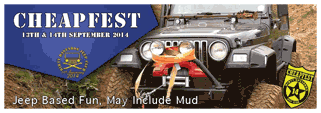The front props on XJ, YJ, TJ are relatively long and have the double cardan joint which makes the driveline angles far less critical and allows a lot of movement.
The rear props on TJ and YJ are very short and have conventional Hardy-spicer UJs at both ends which must run at the same angles in order to eliminate excessive torsional vibration. A lot of XJs also has very limited movement of the UJ at the the slip yoke end of the shaft due to the design of the slip yoke casting This can cause the joint to bind even at 3" of lift. This can be improved by using the slip yoke from a YJ (or TJ with a little machining) and allows far more movement of that joint. Of course the ideal (expensive) soloution for all these Jeeps is to fit the slip yoke eliminator and special shaft, which gives you a shorter , stronger output on your transfer case, moves your slip joint to the shaft like the front one and incorporated a double cardan joint.
ZJs, WJs and KJs are often fitted with CV joints like the ones found on FWD cars which also have their own problems with limited travel and strength.


